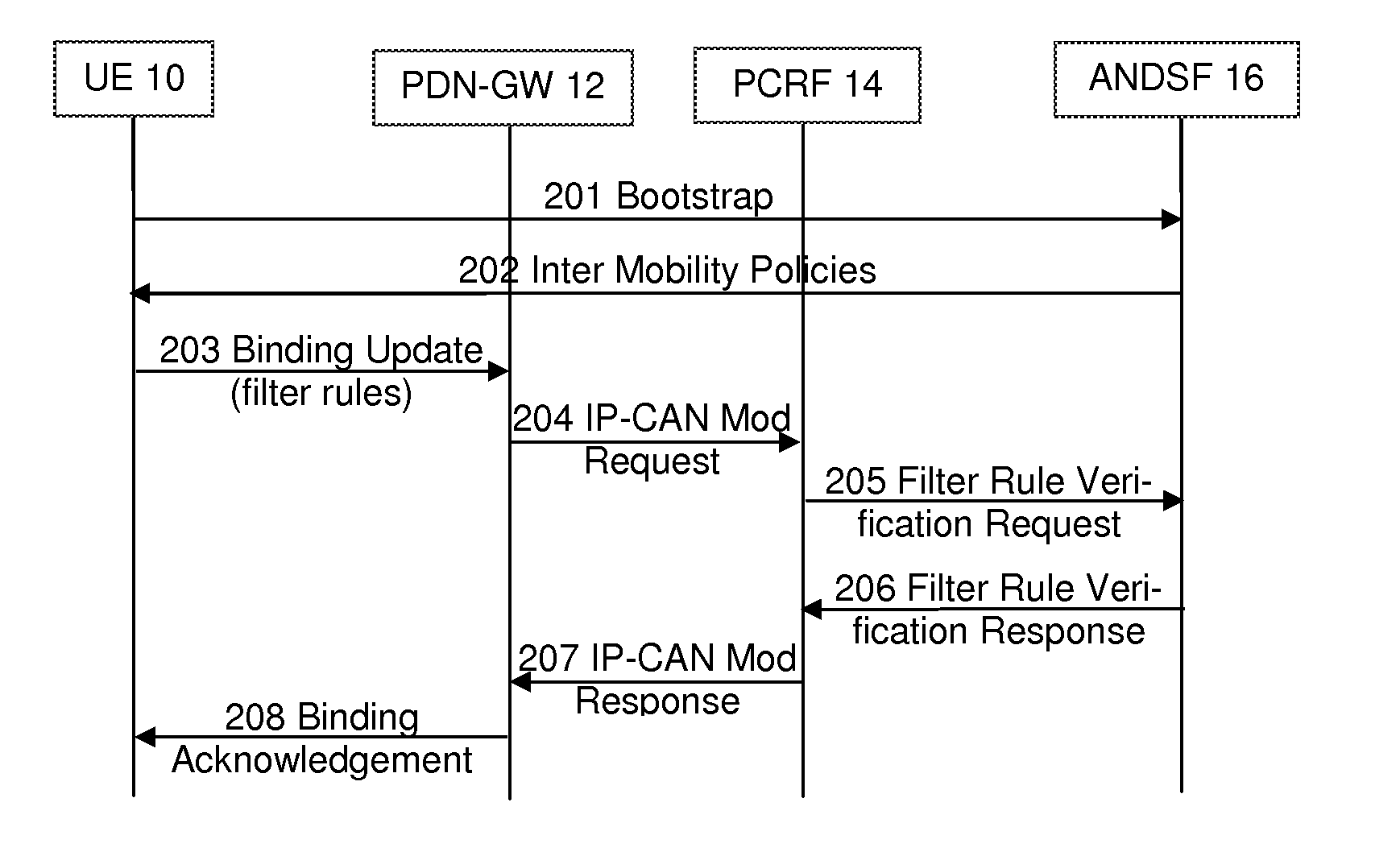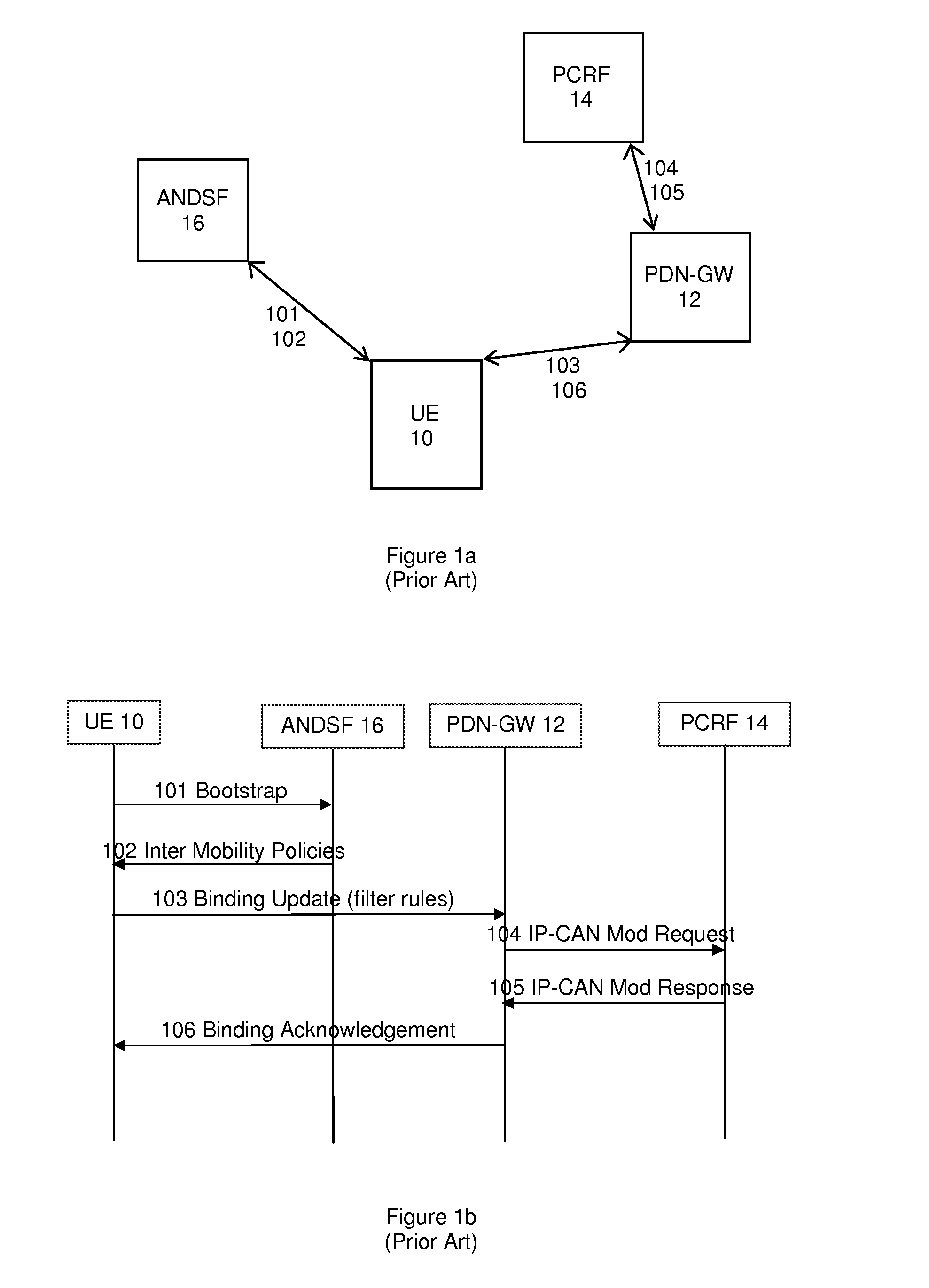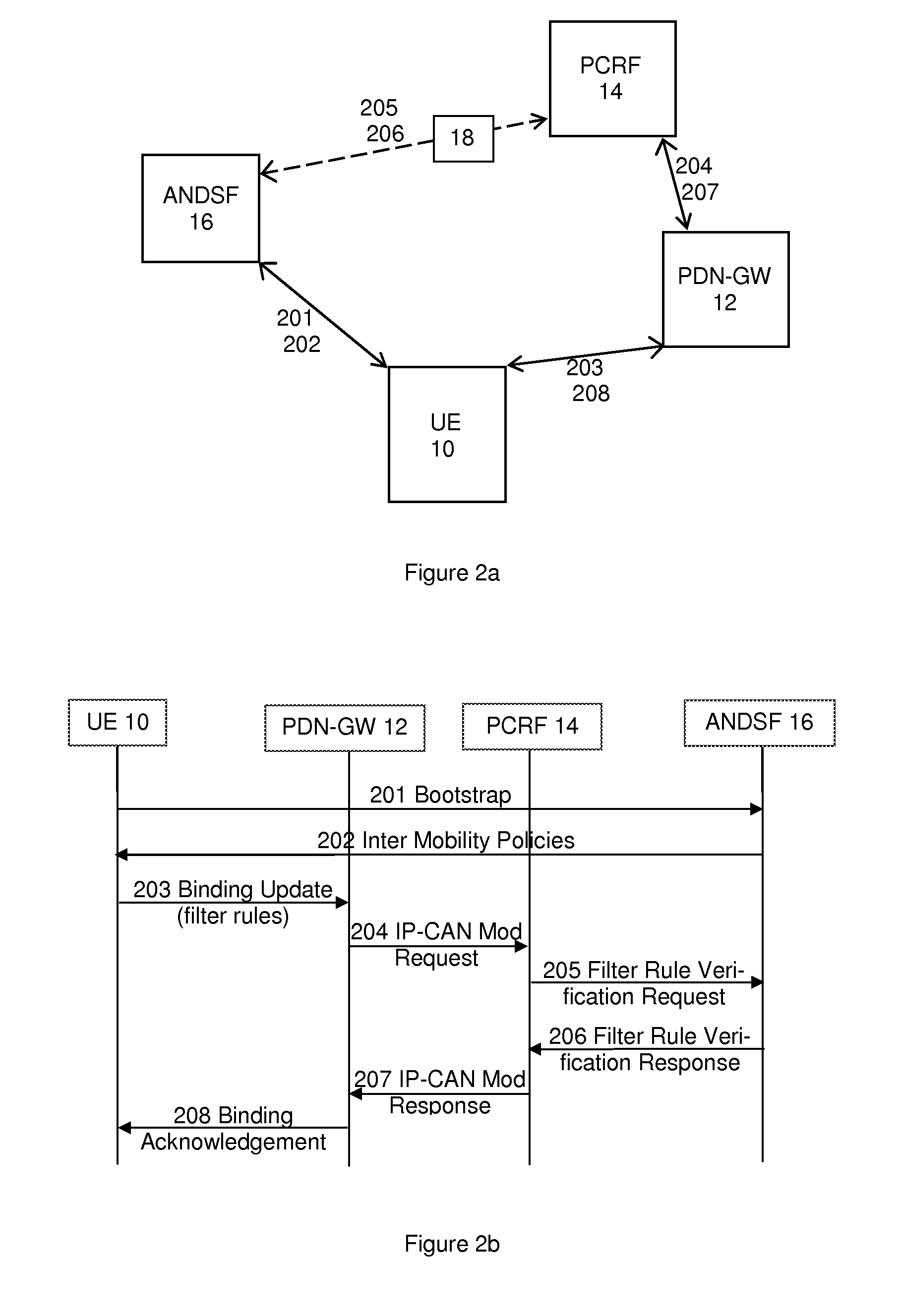Flow mobility filter rule verification
a filter rule and flow technology, applied in the field of filter rule verification, can solve the problems of deteriorating the capabilities of the whole network, affecting the control ability of operators, and affecting so as to improve the ability of operators to control, improve the efficiency of network resources, and reduce the effect of cos
- Summary
- Abstract
- Description
- Claims
- Application Information
AI Technical Summary
Benefits of technology
Problems solved by technology
Method used
Image
Examples
Embodiment Construction
[0027]FIGS. 1a and 1b show the filter rule setup process as currently specified in the 3GPP standard (see Mobile IPv6 Support for Dual Stack Hosts and Routers, Internet Engineering Task Force Request for Comments, IETF RFC 5555). A UE 10 attaches to the network by first sending a bootstrap message 101 to the EPC network entity, ANDSF 16, which provides, in a return message 102, a set of Inter Mobility Policies (or IP Flow Policies). These policies are a high level set of instructions as to how the UE 10 should access the network for certain types of applications and in given conditions (e.g. time of day, roaming scenarios, at certain cost etc.). Based on these policies, the UE 10 then determines its low level filter rules when it requests an IP-CAN session for a particular application flow at any given time.
[0028]These filter rules are sent inside a CMIP (DSMIPv6) Binding Update message 103 to the user's Home Agent (HA) in the PDN-GW 12. If CMIP is in use, as in the present illustra...
PUM
 Login to View More
Login to View More Abstract
Description
Claims
Application Information
 Login to View More
Login to View More - R&D
- Intellectual Property
- Life Sciences
- Materials
- Tech Scout
- Unparalleled Data Quality
- Higher Quality Content
- 60% Fewer Hallucinations
Browse by: Latest US Patents, China's latest patents, Technical Efficacy Thesaurus, Application Domain, Technology Topic, Popular Technical Reports.
© 2025 PatSnap. All rights reserved.Legal|Privacy policy|Modern Slavery Act Transparency Statement|Sitemap|About US| Contact US: help@patsnap.com



